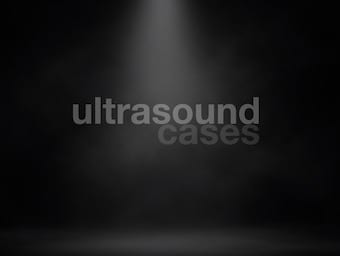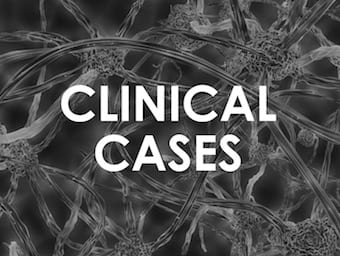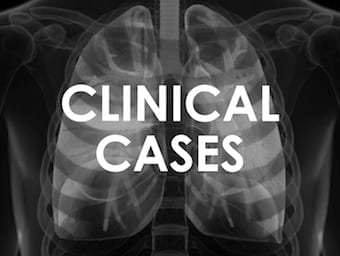
Pneumothorax Case 3
A 31 year old male presents after what is thought to be a superficial penetrating chest wound. You perform an ultrasound. What does this show?
LITFL Clinical Case Collection. Over 250 Q&A style clinical cases to assist Just in Time Learning and Life Long Learning. Cases are categorised by specialty and can be searched by keyword from the database table

A 31 year old male presents after what is thought to be a superficial penetrating chest wound. You perform an ultrasound. What does this show?

A 44 year-old man presents to the ED 2 days after having an infected left mandibular second molar tooth extracted by his dentist.

aka ENT Equivocation 002 A 38 year old male with a background history of type 2 diabetes presents with fevers, rigors and pain on swallowing. There is no sign of impending airway compromise; however, marked trismus is noted. The following…

It’s a busy night shift in the ED (as always) and one of the Interns comes to present a case to you. He’s seen a 23 yr old female who has presented with lethargy and weakness. While you're listening to the Intern your phone rings — it's the lab calling to tell you the patient’s potassium is 1.9 mmol/L.

A 20 year old male presents with 3 days of lethargy and generalised malaise. He is confused and looks very unwell. Can sort out this metabolic muddle?

You are asked to review a 73 year old lady who is in hospital for treatment of septic arthritis affecting a prosthetic right hip joint inserted 5 years earlier.

An 87 year old female presented with a subarachnoid haemorrhage. GCS 8/15. Can you figure out her acid-base disturbance?

A 50 year old Chinese female presents with severe weakness. She has a history of previous similar episodes that self-resolved. What's going on?

Consider a 65 year-old male presenting with right-sided flank pain radiating to the groin. The following CT scan was taken to confirm a presumed diagnosis of renal colic:

It's your first day on the job in the ED and first up is a 23 year-old male with a 2 day history of a sore throat. He's had difficulty swallowing and finds it painful to eat and drink.

Environmental Enigma: One of your colleagues tells you he is going to climb Mt Kilimanjaro next month. He has never been to altitude before and asks you how he can prevent altitude sickness while on his trek...

A patient has chest pain and shortness of breath. Is there a way to rule out pulmonary embolism without further investigation? Can you use the PERC rule?